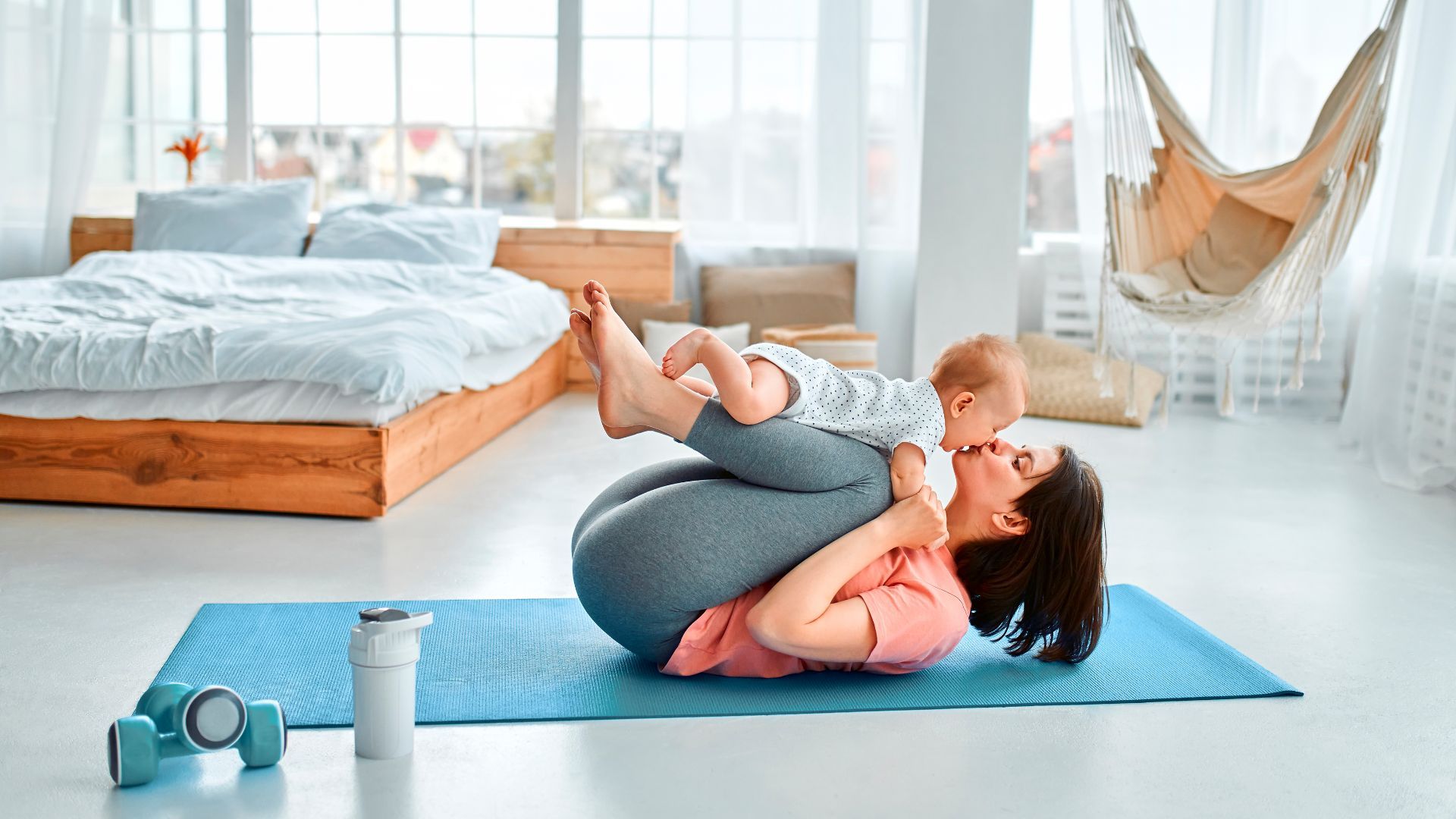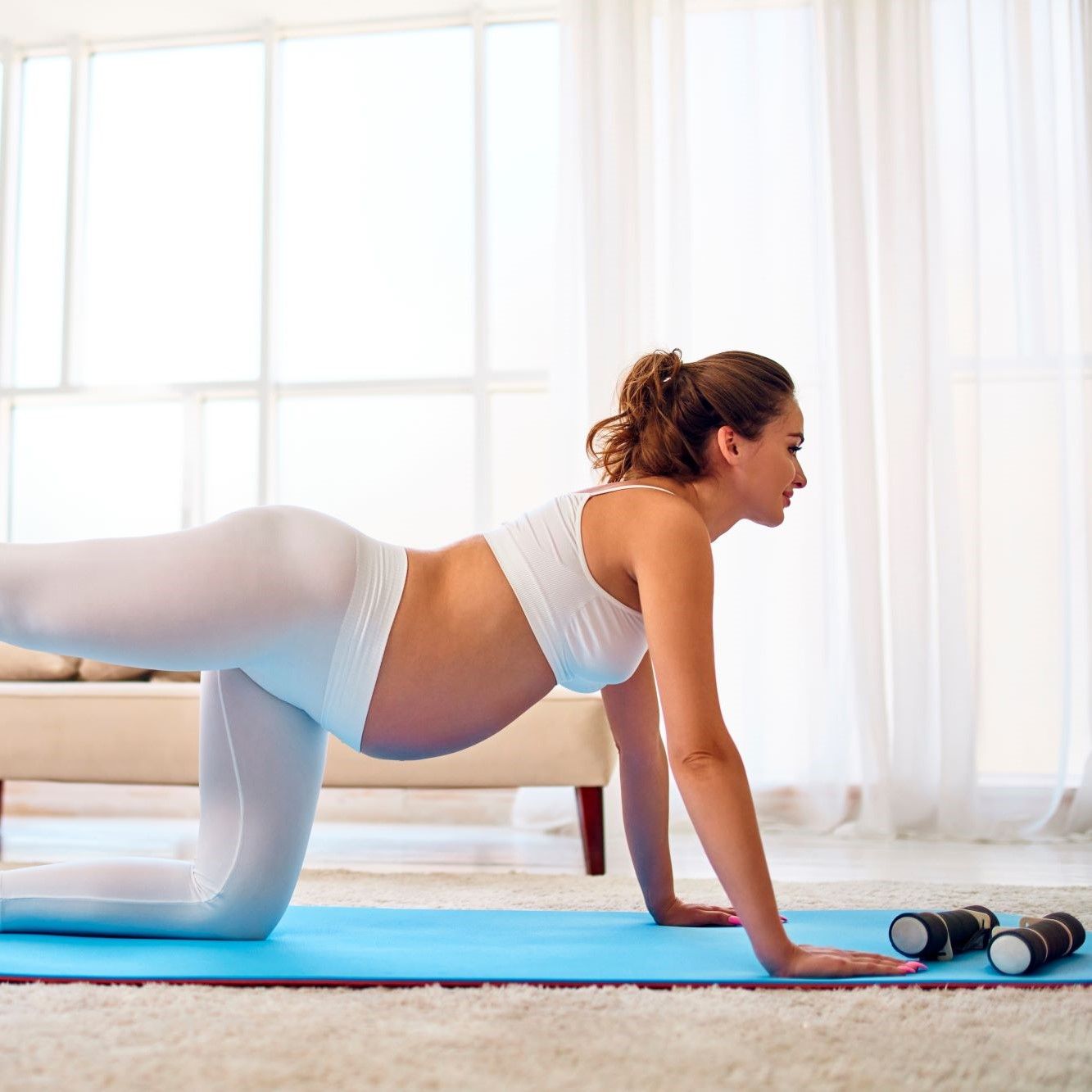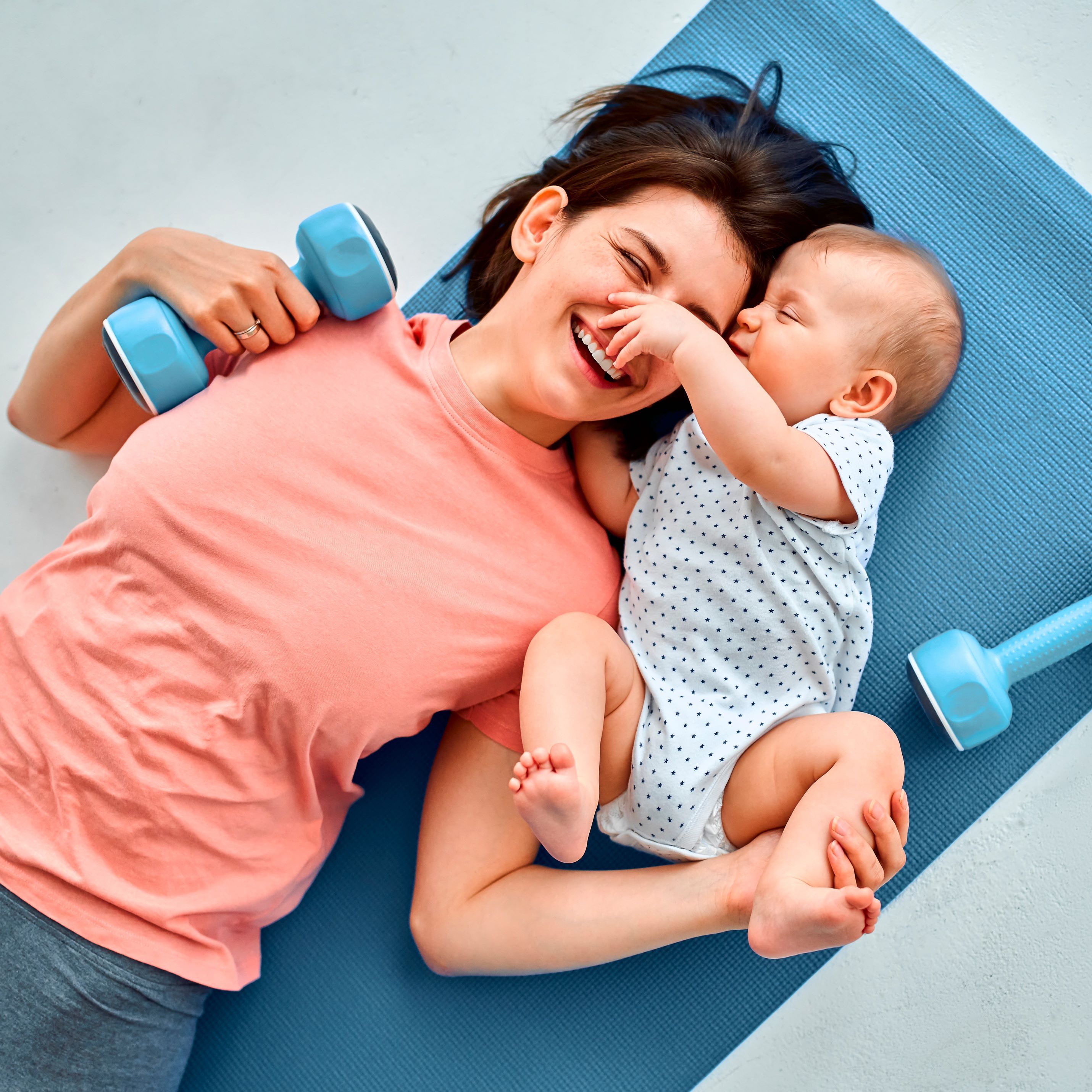Welcoming a new baby into your life is undoubtedly one of life's most magical moments, however, amid the whirlwind of sleepless nights and physical and mental changes that happen, it’s easy for your health and fitness to take a backseat. Many women don’t know where to start with reintroducing exercise or what they can and can't do after being pregnant. Returning or commencing exercise after giving birth is an empowering process and has so many benefits for your health and fitness, but it requires a strategic approach to ensure you do so safely and to maximise your recovery. There is a strong emphasis on ‘bouncing back’ to your pre-pregnancy body in society but exercising after giving birth extends far beyond merely shedding baby weight; it is a holistic endeavour aimed at restoring strength, addressing core and pelvic floor function, and fostering overall wellness.
The Benefits of Exercise After Pregnancy
Exercise is one of the most powerful ways to improve your health and well-being. Most of the research available is carried out on pregnant women, but we can still deduce a lot of benefits from exercise in the postpartum period. These benefits can include:
- Reduced symptoms of anxiety and depression,
- Improved mood and body image,
- Improved bone mineral density or prevention of lactation-associated bone loss in breastfeeding mothers,
- Reduced severity of postpartum depression,
- Improved aerobic fitness,
- Improved cardiovascular health through improvements in glucose tolerance and lipid profiles,
- Helping children form more regular physical activity habits,
- Decreased resting blood pressure,
- Improved sleep and energy levels,
- Improved physical recovery via improved blood circulation and tissue healing, and reduced swelling,
- Helps to restore core strength and improves posture,
- Improved insulin sensitivity, and
- Improved weight management and body composition (i.e., fat vs muscle mass).
Common Barriers to Exercise After Giving Birth
Being a parent is one of the most challenging jobs in the world, so it's only to be expected that you'll be faced with many barriers that prevent you from exercising! Time constraints, fatigue, lack of childcare or support, and physical limitations are among the most common barriers. Overcoming these barriers, or identifying ways to make exercise more accessible (such as home sessions) is of paramount importance as it directly contributes to your overall well-being and recovery. One of the most common barriers that women face after being pregnant is diastasis recti, which is what we are going to focus on in this article.
Diastasis Recti
During pregnancy, the body naturally accommodates the growing baby by expanding the abdominal region. Diastasis recti occurs when the abdominal muscles separate and create a gap. 100% of women will have some degree of abdominal separation at 37 weeks gestation. 60% of women have diastasis at 6 weeks post-partum, and 30% have it at 12 months. Diastasis recti will naturally resolve in some women, but others may need specific treatment and training to help resolve it.
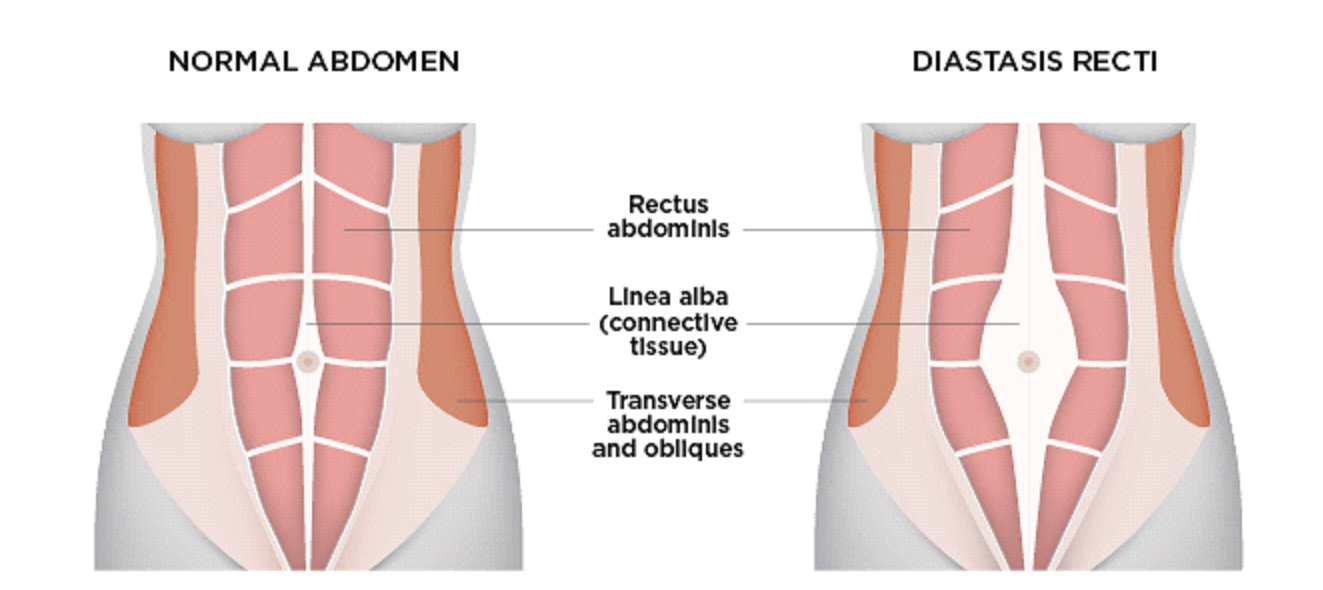 Photo Credit: Baby Centre
Photo Credit: Baby Centre
How to Test for Diastasis Recti
So, how do you know if you have diastasis recti? There are many ways to test for it, including a visual assessment, the pelvic tilt test, a functional assessment and the finger test. Let’s use the finger test as an example:
- Lie on your back with your knees bent and your feet flat on the floor.
- Check the width and depth between the two rectus muscle bellies while barely lifting the head.
- Using your index and middle fingers, place both fingers horizontally above your belly button. Take note of how it feels. Note the depth and width. Did it feel springy like a trampoline or was there an obvious sinking? If so, how many knuckles deep?
- Now, repeat the above step but move your fingers halfway between your rib cage and belly button, place your fingers across and test again. Note the depth and width. Did it feel like a trampoline and springy, or was there an obvious sinking? If so, how many knuckles deep?
- Move halfway between the pubic bone and belly button and check width and depth. Did it feel like a trampoline and springy, or was there an obvious sinking? If so, how many knuckles deep?
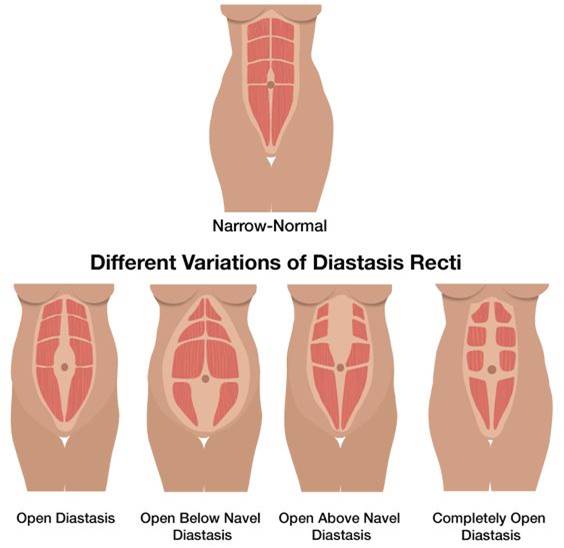
Photo Credit: Baby Centre
Diastasis can occur at various locations in the abdominal wall, and how you work on healing it depends on the location. The rectus abdominis ‘closes’ the gap and the transverse abdominis helps create tension and ‘flatten’ the core. Different types of diastasis recti can benefit from different types of exercises to help close the gap and strengthen the core muscles.
The Importance of Correcting Diastasis Recti
As mentioned, all women who have full-term pregnancies will experience some degree of separation, and this can have various impacts on a woman’s health and well-being, including:
1. Increased Core Strength
A strong core plays a fundamental role in providing stability and support to the spine. When diastasis recti is left unresolved, it can lead to lower back pain and poor posture. Addressing diastasis recti through specific exercises helps rebuild core strength and stability. This can also help to improve posture, which can reduce the risk of musculoskeletal problems associated with poor alignment.
2. Decreased Incontinence and Pelvic Pain
The abdominal muscles, including the rectus abdominis, are interconnected with the pelvic floor muscles. Diastasis recti can contribute to pelvic floor dysfunction, which may lead to issues with urinary control and pelvic pain. Rehabilitating the core muscles can positively impact pelvic floor function and resolve incontinence and pelvic pain.
3. Improved Confidence
Many individuals are motivated to address diastasis recti for aesthetic reasons. Closing the gap between the abdominal muscles can result in a flatter and more toned appearance in the abdominal region, which can help to make them feel more comfortable and confident in their skin.
How to Resolve Diastasis Recti
Diastasis can be resolved with strength exercises and doesn't usually require surgery. Exercises that focus on strengthening the core muscles can help to resolve diastasis recti, however, the type of exercises that can help depends on the severity of the diastasis recti. Diastasis recti results in the abdominal muscles becoming weak, but how weak these muscles are depends on the degree of separation within them. Performing exercises that place the abdominals under too much stress can exacerbate the issue or, even worse, lead to prolapse (when an organ moves into a place of the body that it's not supposed to)! Therefore, it's important to take an individualised approach to strengthening your core muscles so that you safely and effectively resolve diastasis recti. Our post-natal training programs are designed by our qualified post-natal coach and ensure you start training at the right level for the severity and type of diastasis recti you have.
Whilst there are many benefits to exercising after pregnancy, it's important to be aware of the changes in your body and how this can affect your training. Diastasis recti affects most women after pregnancy and can result in many having mild to severe separation of the abdominal muscles. Correcting diastasis recti is important for improving core strength and pelvic floor function, and minimising urinary control issues and pelvic pain, but it also can help to improve confidence. It's important to take an individualised approach to strengthening your core muscles that is based on the severity of diastasis recti you experience. This will help to ensure that you do not over-stress the abdominal muscles and exacerbate the issue.
Have A Coach Help You Navigate Your Post-Partum Journey
Being a mother brings all sorts of challenges; lack of time, special training needs, stress, and poor sleep, just to name a few. Our qualified post-natal coaches are here to help you make good nutrition and training a sustainable part of your lifestyle and help you strengthen and improve the function of your body. Have your program tailored to your body, goals, and lifestyle with our online coaching programs so that you can live a fit and healthy life, and the best role model for your children!

